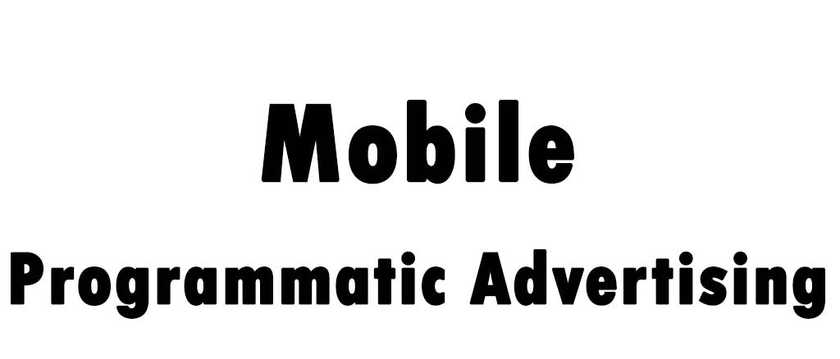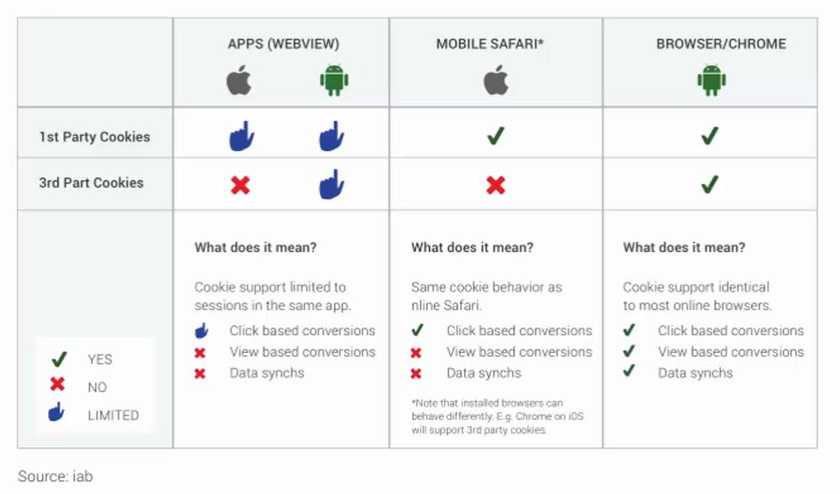I am sure that you are excited to know more about programmatic advertising.
I recommend you to read Part 1 before continue reading.
In this second part, I am going to talk about some key components that you must know regards programmatic advertising.
After talking about the different platforms that integrate the programmatic advertising market, today you will learn more about the types of data and the different ways to buy Ads. Also you will learn the difference between the traditional programmatic and the newcomer mobile programmatic advertising.
It is not easy to become a qualified marketer at programmatic advertising, but I am sure that you will get a better understanding if you continue reading.
Types of Data
If you remember, Data Management Platforms provides data to both sides of the market.
Well, the thing is that there are different types of Data and it is really important to explain the difference between them.
1st Party Data
It is data owned by the advertiser company from their audience (from cookies, pixel tags, etc..).
2nd Party Data
It is the newest form of data, and it is going to be more important in the near future.
The 2nd party data is somebody else 1st party data thanks to partnerships or agreements with other companies.
If two companies have a similar target, they can exchange this information to target the partner company's audience.
3rd Party Data
It is all the data not related to 1st party data. It is gathered from many resources and it gives companies the big picture about the behavior of consumers.
Why is data so important?
Data gives you the ability to target the right people. That's why there is a constant evolution to get better at collecting and filter data.
Also most of the companies use together different types of data to being able to identify better their target.
Now let's talk about Buying.
Types of Programmatic Buying
There are a few ways to buy Ads in the programmatic advertising market. Each of them has his own characteristics, and it can be useful regards your needs.
Real Time Bidding (RTB)
RTB is the buying and selling of Ads in real-time through the auction held in ad exchanges, DSPs, or SSPs.
It is the more common way to buy Ads, 90- 92% percent of programmatic advertising is bought by this method.
Ok but... how does it work?
This is where the magic happens.
A publisher chooses an SSP to work with and place his Ads inventory into the platform.
Now the SSP is in charge of the inventory of the publisher.
When a user goes to the website of the publisher the SSP receive a request to fill a space of the website with an Ad.
The SSP now goes to the Data Management Platform to get data about the user that is loading the website.
When the SSP has all the data it sends a request to Ad Exchanges, Ad Networks and DSPs to fill the ad.
The Ad Exchanges, Ad Networks and DSPs now bid according to their algorithms and targeting parameters.
When any of them win the bid, they request to the agency the Ad and send it to the SSP.
Finally, the SSP send the Ad to the publisher and the Ad is shown to the user.
Read again to fully understand how it works.
This process takes less than 80 milliseconds (a blink takes 300 to 400 milliseconds).
Programmatic direct
It is the automatic process where advertisers buy directly to publishers.
While Real Time Bidding does not guarantee that you get the Ad spot of your choice, with programmatic direct, advertisers can guarantee their Ad spot.
The Data Management Platforms still play a huge role in programmatic direct by getting data to increase the effectiveness of the Ad.
Payouts
Similar to Programmatic Direct, in this case, it is more related to CPI(Cost Per Install), which in our case is relevant. The buyer and seller agree to pay a fixed amount of money per app installation.
Where things become a little bit dirty...
Also, I think is interesting to mention something that happens in programmatic advertising.
Data Leakage
Imagine an advertiser who wants to put an Ad in premium sites with a high bid. The advertiser has the opportunity to put a cookie without the publisher knowing. When they tracked the user, the advertiser stops to work with the premium site because they have the information they needed about the behavior of the lead.
Then the advertiser launches other RTB campaign targeting those users that have been collected with cookies in the premium site but...
This campaign has a lower prize because the advertiser is no longer working with the premium publisher.
Pretty crazy right?
Finally, I would like talk specifically about Mobile Programmatic Advertising.

Is pretty much the same ecosystem, where companies do the same role you learned in Part 1.
But it is newer like it was programmatic advertising 10 years ago.
In Mobile, you can choose from web browser inventory, in-app inventory or video inventory.
Usually Ads in Apps win vs web browser Ads.
Also, Facebook wins vs every other app and Google wins in mobile web.
Google + Facebook make almost 70% of the mobile ad market.
Another important thing to notice is that there are no cookies on apps.
You can only use them in web browsers.

There is no collaboration between Google and Apple regards tracking in mobile devices.
There is not a standard.
Also, Apps are not allowed to share tracking data with others.
And finally, I want to point something really interesting.
Facebook Website Custome Audience
It allows marketers to target their audience trough Facebook Ads by uploading their own data.
This is really powerful.
Marketers can create based on his own data campaigns to target their customers on Facebook App.
This is one of the main reason why Facebook is such a huge player in programmatic advertising.
Conclusion
Programmatic Advertising is the most powerful market to explore right now.
Get familiar with it, start to think about your strategy with it in mind, and your conversion rates will go up.
If there’s anything that’s not clear to you right now, just leave me your questions in a comment below, and I’ll do my best to answer them.